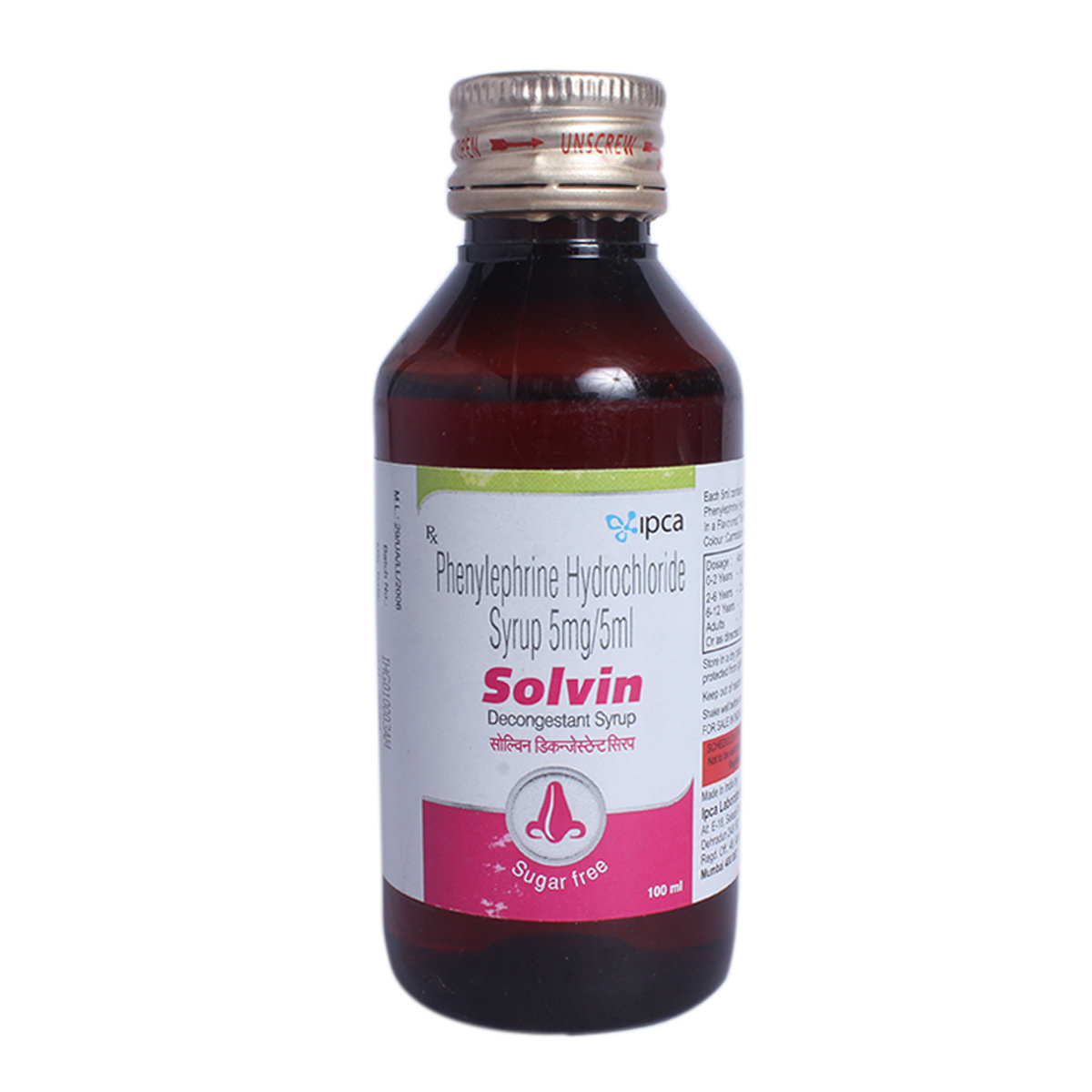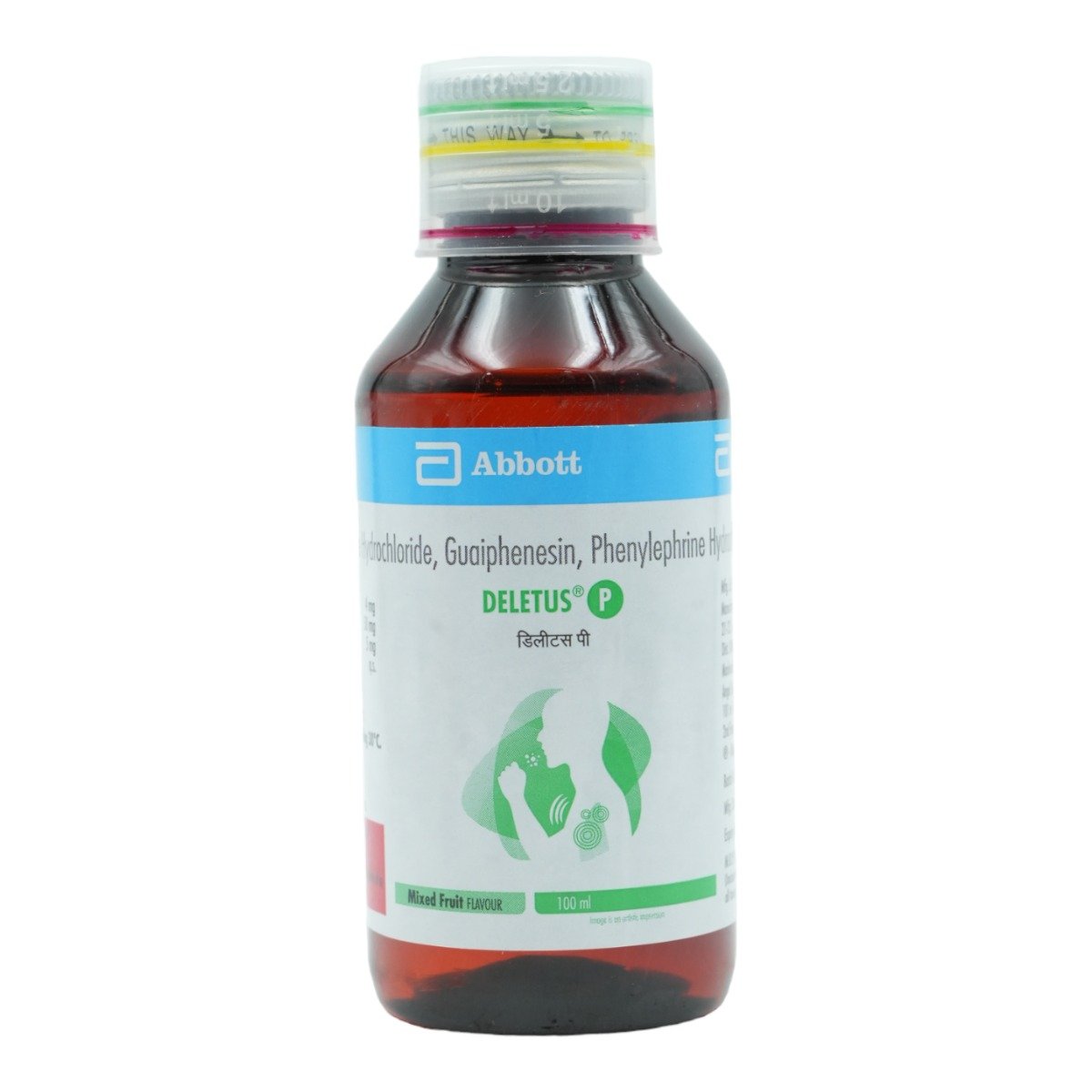Bromhexine+phenylephrine
About Bromhexine+phenylephrine
Bromhexine+phenylephrine belongs to a combination medication called ‘expectorant’ primarily used to treat common cold symptoms with cough and allergic symptoms, including stuffy nose and sinus congestion. Coughing (dry or productive) is the body’s way of clearing irritants (like allergens, mucus, or smoke) from airways and preventing infection. There are two types of coughs, namely: Dry cough and chesty cough. A dry cough is tickly and doesn't produce any vicious or thick mucus, while a chesty cough (wet cough) means mucous or sputum is produced to help clear your airways.
Bromhexine+phenylephrine is a combination of two drugs: Bromhexine (mucolytic agent) and Phenylephrine (decongestant). Bromhexine is a mucolytic agent (cough/sputum thinner) that works by thinning and loosening phlegm (mucus) in the lungs, windpipe, and nose. Thus, it helps to cough out easily. Phenylephrine is a decongestant that works by contracting and narrowing the blood vessels. Therefore, it provides relief from congestion and decreases mucus production.
Take Bromhexine+phenylephrine as prescribed by your doctor. Your doctor will recommend how often you take Bromhexine+phenylephrine based on your medical condition. You may experience certain side effects in some cases, including drowsiness, nausea, vomiting, headache, tiredness, stomach upset, dizziness, or tiredness. Most of these side effects of Bromhexine+phenylephrine do not require medical attention and gradually resolve over time. However, if the side effects persist or worsen, please consult your doctor.
Please tell your doctor if you are allergic to Bromhexine+phenylephrine or any other medicines. If you are pregnant or breastfeeding, it is advised to inform your doctor before using Bromhexine+phenylephrine. It should be used in children only if prescribed by a doctor. Drink plenty of fluids while taking Bromhexine+phenylephrine to loosen mucus. Avoid using Bromhexine+phenylephrine if you have taken medicines such as linezolid, phenelzine, selegiline, rasagiline, isocarboxazid, tranylcypromine, and methylene blue injection in the past 14 days. If you have asthma, stomach ulcers, phenylketonuria (a congenital disability that causes accumulation of amino acid, phenylalanine in the body), urination problems, or kidney or liver problems, inform your doctor before taking Bromhexine+phenylephrine.
Uses of Bromhexine+phenylephrine
Medicinal Benefits
Bromhexine+phenylephrine consists of two medicines: Bromhexine (mucolytic agent) and Phenylephrine (decongestant). Bromhexine belongs to the class of mucolytic agents (cough/sputum thinner) that works by thinning and loosening phlegm (mucus) in the lungs, windpipe, and nasal passage, thereby, helping to cough out easily. Phenylephrine belongs to a class of medicines called decongestants. It works by shrinking the small blood vessels in the nasal passage, reducing stuffy nose, relieving inflammation (redness and swelling), and making breathing easier. Collectively, Bromhexine+phenylephrine is used to treat common cold and allergy symptoms such as stuffy nose, sinus congestion, and chesty cough (wet cough).
Directions for Use
Storage
Side Effects of Bromhexine+phenylephrine
- Nausea
- Vomiting
- Diarrhea
- Stomach pain
- Drowsiness
- Restlessness
Drug Warnings
Please tell your doctor if you are allergic to Bromhexine+phenylephrine or any other medicines. If you are pregnant or breastfeeding, it is advised to inform your doctor before using Bromhexine+phenylephrine. Bromhexine+phenylephrine should be used with caution in children below 12 years. Avoid using Bromhexine+phenylephrine if you suffer from gastric ulcers, as it may worsen your condition. Drink plenty of fluids while taking Bromhexine+phenylephrine to loosen mucus. If you have asthma, stomach ulcers, phenylketonuria (a birth defect that causes accumulation of amino acid, phenylalanine in the body), or kidney or liver problems, inform your doctor before taking Bromhexine+phenylephrine. Do not take Bromhexine+phenylephrine if you have taken an MAO inhibitor (anti-depressant medication in the last 14 days, as it may cause severe interaction. Do not stop taking Bromhexine+phenylephrine even if you feel better without asking your doctor, as your symptoms may come back and even worsen your condition. Bromhexine+phenylephrine may cause drowsiness and sleepiness, so it is advised not to drive a car or operate machinery. Consumption of alcohol should be avoided as it may lead to excessive drowsiness and sleepiness.
Drug Interactions
Drug-Drug Interaction: Bromhexine+phenylephrine may interact with other decongestants (oxymetazoline, phenylephrine, pseudoephedrine), anti-depressants (duloxetine, isocarboxazid, rasagiline, linezolid, tranylcypromine), and medicines used to treat migraine (ergotamine, methysergide), anti-sickness drugs (domperidone, metoclopramide), blood thinners (warfarin, aspirin), medicines used to treat heart disease (digoxin), antibiotics (chloramphenicol), high cholesterol-lowering medicines (cholestyramine).
Drug-Food Interaction: Avoid alcohol intake and tobacco consumption with Bromhexine+phenylephrine as it may cause increased drowsiness, dizziness, and lack of concentration.
Drug-Disease Interaction: If you have a stomach ulcer, high blood pressure, coronary artery disease, glaucoma (increased pressure in the eye), kidney or liver problems, are receiving monoamine oxidase inhibitor (MAO) therapy, inform your doctor before taking Bromhexine+phenylephrine.
Drug-Drug Interactions Checker List:
Safety Advice

Alcohol
cautionAvoid consumption of alcohol with Bromhexine+phenylephrine as it may increase drowsiness.

Pregnancy
cautionThe safety of Bromhexine+phenylephrine in pregnant women is unknown. If you are pregnant, consult your doctor before taking this medicine. Your doctor may prescribe Bromhexine+phenylephrine if the benefits outweigh the risks.

Breast Feeding
cautionIt is unknown if Bromhexine+phenylephrine passes into breastmilk. If you are breastfeeding, consult your doctor before taking this medicine. Your doctor may prescribe Bromhexine+phenylephrine if the benefits outweigh the risks.

Driving
cautionBromhexine+phenylephrine may cause drowsiness or tiredness in some people. Therefore, drive only if you are alert after taking Bromhexine+phenylephrine.

Liver
cautionTake Bromhexine+phenylephrine with caution, especially if you have a history of liver diseases/conditions. The dose may be adjusted by your doctor as required.

Kidney
cautionTake Bromhexine+phenylephrine with caution, especially if you have a history of kidney diseases/conditions. The dose may be adjusted by your doctor as required.

Children
cautionUse Bromhexine+phenylephrine in children under 12 years only if prescribed by your doctor.
Habit Forming
Diet & Lifestyle Advise
-
Wash your hands with soap and water regularly to prevent the spread of germs.
-
Eat plenty of foods rich in good bacteria, like yoghurt, to improve overall health.
-
Drink plenty of fluids to avoid dehydration.
-
Gargle with salt water for relief from sore throat.
-
Avoid dairy products such as milk, as it may increase mucus production. Also, avoid processed or refined foods to have relief from cough. Instead, replace baked foods, fried foods, white bread, white pasta, French fries, sugary desserts, and chips with green leafy vegetables.
-
Avoid citrus fruits as they may worsen the cough. Eat fruits rich in water content, such as pears, watermelon, peaches, and pineapples.
-
Eat a healthy diet and exercise regularly to strengthen your breathing muscles and boost your immune system.
-
Learning breathing exercises will help you move more air in and out of your lungs.
-
Quit smoking and avoid passive smoking. Smoking also reduces the effectiveness of the medicine.
Special Advise
-
You are recommended to inform your doctor that you are taking Bromhexine+phenylephrine before undergoing any medical tests or surgery.
-
It is advised to stop using Bromhexine+phenylephrine if your cough persists for more than one week and consult your doctor.
-
Do not take Bromhexine+phenylephrine if you have taken an MAO inhibitor (anti-depressant medication) in the past 14 days; it may cause serious drug interaction.
Patients Concern
Disease/Condition Glossary
Coughing: It occurs as a reflex action in the throat when there is mucus or any other foreign irritant in it. Cough can be dry or productive. A productive cough (wet cough) develops sputum (phlegm or mucus) from the lungs. Cough is commonly caused as a response to allergy or viral infection but coughing up mucus is possibly an indication of infection in the respiratory tract. If you are coughing out thick, solid white mucus, it indicates that you may have a bacterial infection in the airways. Clear or light-coloured mucus indicates allergies or minor infections in the respiratory tract, and yellow or green mucus indicates a respiratory infection.
Nasal congestion: It is a condition in which the obstruction to the airflow in and out of the nose. It can be caused by infections such as the common cold, flu or sinusitis, and allergies. Inflammation due to infection and allergic reaction can cause excessive mucus and make it difficult for it to drain from the nose. Symptoms of congestion include stuffy nose, sinus pain, mucus buildup, swollen nasal tissue, difficulty breathing through the nose.
FAQs
Bromhexine+phenylephrine is a combination of two medicines: Bromhexine and Phenylephrine, used to relieve cough and cold symptoms. Bromhexine is a mucolytic that thins and loosens mucus (phlegm), making it easier to cough. Phenylephrine is a decongestant that narrows the small blood vessels providing relief from congestion or stuffiness in the nose.
No, Bromhexine+phenylephrine is not recommended for patients suffering from stomach ulcers as it may worsen the condition. However, please consult a doctor before taking Bromhexine+phenylephrine.
Yes, Bromhexine+phenylephrine may cause drowsiness in some people. It is not necessary for everyone taking Bromhexine+phenylephrine to experience this side effect. Therefore, avoid driving if you feel drowsy after taking Bromhexine+phenylephrine.
Taking Bromhexine+phenylephrine along with any anti-depressant medication is not recommended as it contains phenylephrine, which may lead to unpleasant side effects or drug interaction. Also, Bromhexine+phenylephrine should be taken at least 14 days after your last dose of anti-depressants, especially monoamine oxidase inhibitors (MAO).
You are not recommended to stop taking Bromhexine+phenylephrine without consulting your doctor, as it may worsen the cough or cause recurring symptoms. Therefore, take Bromhexine+phenylephrine for as long as your doctor has prescribed it, and if you experience any difficulty while taking Bromhexine+phenylephrine, please consult your doctor.
There is a sugar-free syrup available for diabetes patients. It is always better to consult a doctor before using Bromhexine+phenylephrine if you have diabetes.







